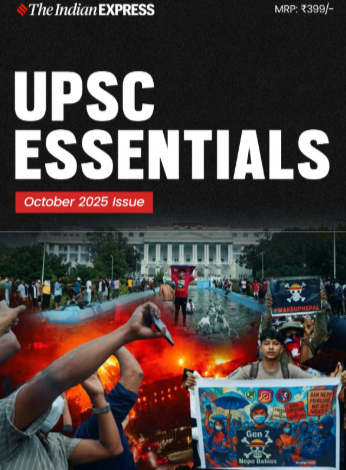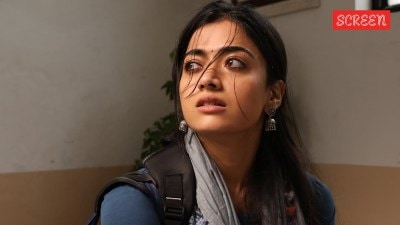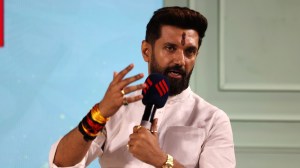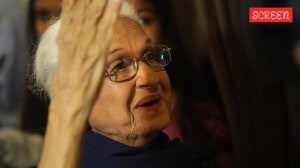Priya Kumari Shukla is a Senior Copy Editor in the Indian Express (digital). She contributes to the UPSC Section of Indian Express (digital) and started niche initiatives such as UPSC Key, UPSC Ethics Simplified, and The 360° UPSC Debate. The UPSC Key aims to assist students and aspirants in their preparation for the Civil Services and other competitive examinations. It provides valuable guidance on effective strategies for reading and comprehending newspaper content. The 360° UPSC Debate tackles a topic from all perspectives after sorting through various publications. The chosen framework for the discussion is structured in a manner that encompasses both the arguments in favour and against the topic, ensuring comprehensive coverage of many perspectives. Prior to her involvement with the Indian Express, she had affiliations with a non-governmental organisation (NGO) as well as several coaching and edutech enterprises. In her prior professional experience, she was responsible for creating and refining material in various domains, including article composition and voiceover video production. She has written in-house books on many subjects, including modern India, ancient Indian history, internal security, international relations, and the Indian economy. She has more than eight years of expertise in the field of content writing. Priya holds a Master's degree in Electronic Science from the University of Pune as well as an Executive Programme in Public Policy and Management (EPPPM) from the esteemed Indian Institute of Management Calcutta, widely recognised as one of the most prestigious business schools in India. She is also an alumni of Jamia Milia Islamia University Residential Coaching Academy (RCA). Priya has made diligent efforts to engage in research endeavours, acquiring the necessary skills to effectively examine and synthesise facts and empirical evidence prior to presenting their perspective. Priya demonstrates a strong passion for reading, particularly in the genres of classical Hindi, English, Maithili, and Marathi novels and novellas. Additionally, she possessed the distinction of being a cricket player at the national level. Qualification, Degrees / other achievements: Master's degree in Electronic Science from University of Pune and Executive Programme in Public Policy and Management (EPPPM) from Indian Institute of Management Calcutta ... Read More
UPSC Key- May 8, 2023: Know about Forest Fires, Arab League, Maoism and Naxalism, Japan and South Korea
Exclusive for Subscribers from Monday to Friday: The Indian Express UPSC Key May 8, 2023, will help you prepare for the Civil Services and other competitive examinations with cues on how to read and understand content from the most authoritative news source in India.
 UPSC Key May 2023: Here's what you should be reading from the May 8, 2023 edition of The Indian Express
UPSC Key May 2023: Here's what you should be reading from the May 8, 2023 edition of The Indian Express
Important topics and their relevance in UPSC CSE exam for May 8, 2023. If you missed the May 5, 2023 UPSC key from the Indian Express, read it here
FRONT PAGE
At epicentre of Manipur violence, a town looks for safe passage, in & out
Syllabus:
Preliminary Examination: Current events of national and international importance.
Mains Examination: General Studies II: Government policies and interventions for development in various sectors and issues arising out of their design and implementation.
Key Points to Ponder:
• What’s the ongoing story- A TRAIL of broken glass pieces and torched vehicles —as well as shops with shutters down along the arterial Tidim Road speak volumes of the unrest Manipur’s Churachandpur town has witnessed since May 3. The road leads to the heart of the town where a poster has been put up. It has a photograph of a nurse, and says: “Martyred for the tribal cause.”
• Quick Recall-Violent clashes broke out at various places in Manipur during the course of a ‘Tribal Solidarity March’ called on Wednesday (May 3) by the All Tribal Students’ Union of Manipur (ATSUM).
• Why people are protesting?
• What is the present status?
• What was the Manipur High Court directive?
• For Your Information- The Meiteis are the largest community in Manipur, making up roughly 64.6% of its population. In a plea before the High Court, the Meiteis argued that they were recognised as a tribe before the 1949 merger of the princely state of Manipur with the Union of India. Owing to a loss of their identity as a tribe in the aftermath of the merger, the demand for ST status was felt within the community to “save the ancestral land, tradition, culture, and language” of the Meiteis. Thus, the Meiteis sought inclusion in the ST list on account of the community being “victimised without any constitutional safeguards to date”. On April 19, the Manipur High Court observed that the issue had not been decided due to the state government’s negligence in not sending a recommendation to the Centre for the inclusion of the Meitei community in the ST list to date. Directing the Manipur government to consider the case of the Meiteis’ inclusion in the ST list “expeditiously” within four weeks, the court disposed of the case. This resulted in opposition from the existing tribes within Manipur on the grounds that the Meiteis were already dominant in terms of both population and political representation, adding that their Manipuri language finds a place in the Eighth Schedule. Further, sections of the predominantly Hindu Meiteis are already classified under the SC or OBC groups and consequently, have access to opportunities associated with the status. The high court order stands at the center of tensions between the Kukis and the Meiteis and finally escalated into violent clashes between the two communities over the past few days. As the situation worsened, the state’s Home Department issued “shoot-at-sight” orders “in extreme cases”.
• What do the “shoot-at-sight” orders say?
• What provisions of law allow the issuance of “shoot-at-sight” orders?
• “The Manipur conflagration seems to be a culmination of several developments”-Discuss
• “In the tribal states of the Northeast, particularly in the Sixth Schedule areas, natural resources belong to the people, not the state”-What are the provisions given in the sixth schedule?
• Sixth Schedule of the Constitution and Fifth Schedule of the Constitution-Compare and Contrast
• “The correct thing to have done is to challenge the Manipur High Court’s order at a higher bench or the Supreme Court instead of turning the issue into a point of conflict”-do you think so?
• “The problem with India’s Northeast is that boundaries between people and homelands have been drawn by colonialists like Henry McMahon and Cyril Radcliffe who were completely ignorant and insensitive to the kinship ties on either side of the border”-Comment
• Do You Know-According to Patricia Mukhim (editor of Shillong Times), the problem with India’s Northeast is that boundaries between people and homelands have been drawn by colonialists like Henry McMahon and Cyril Radcliffe who were completely ignorant and insensitive to the kinship ties on either side of the border. There are Kukis of the ‘Zo’ ethnic group in Myanmar as well as the Indian side they seem to be undeterred by national or international boundaries. It’s the same with the Mizos of present-day Mizoram. The violence in Myanmar brought many desperate families of Zo origin to Mizoram. There are Nagas of different tribal ethnicities in Myanmar and Manipur. Boundaries drawn by a colonial power are therefore problematic and every now and again thorny problems crop up.
Other Important Articles Covering the same topic:
📍‘Shoot at sight’ in Manipur: Legal basis of govt’s order
Doval in Saudi to discuss US rail link plan for West Asia
Syllabus:
Preliminary Examination: Current events of national and international importance.
Mains Examination:
• General Studies II: Bilateral, regional and global groupings and agreements involving India and/or affecting India’s interests.
• General Studies III: Infrastructure: Energy, Ports, Roads, Airports, Railways etc.
Key Points to Ponder:
• What’s the ongoing story-National Security Advisor Ajit Doval Sunday met his counterparts from the US, Saudi Arabia and the United Arab Emirates to discuss an ambitious proposal being pushed by the White House to link West Asian countries through rail — using Indian expertise — and connect the region to South Asia via sea lanes. Sources in New Delhi said Doval has travelled to Saudi Arabia for Sunday’s meeting. The participants are expected to discuss the broad contours of the massive joint project to build railway, maritime and road connectivity in the larger region, linking the Indian subcontinent in South Asia with West Asia — which the US calls the Middle East.
• What is the railway link plan?
• But why this railway link plan?
• The Middle East, China, USA and India-Connect the dots
• ‘India is keen to participate in the project as it fulfils three strategic objectives’-what are those?
• What is “I2U2”?
• From ‘International Forum for Economic Cooperation’ to “I2U2”-Know the background and Evolution
• The Abraham Accord is between which Countries?
• Map Work-Countries involved in Abraham Accord
• The Abraham Accord is the first Arab-Israeli peace deal-True or False?
• The India-Israel-US-UAE grouping-Know the bilateral relations between each one of them
Other Important Articles Covering the same topic:
📍Shyam Saran writes: With Saudi-Iran deal, China emerges as honest broker in a fractured West Asia
GOVT & POLITICS
Centre’s UMANG, Delhi’s EV policy in NITI Aayog list of ‘best practices’
Syllabus:
Preliminary Examination: Current events of national and international importance.
Mains Examination: General Studies II: Government policies and interventions for development in various sectors and issues arising out of their design and implementation.
Key Points to Ponder:
• What’s the ongoing story– From fighting malnutrition to promoting black rice to integration of students’ skills and experiences into a credit-based system: these are among 75 initiatives of the Centre and the states/ UTs in the social sector to be commended by the Niti Aayog as “best practices”. According to the Niti Aayog, the government’s apex public policy think-tank tasked with catalysing economic development and fostering cooperative federalism, these 75 initiatives have benefitted a large segment of the society and are replicable.
• Best practices in social sector: A compendium 2023-Know the best practices highlighted by the report
• For Your Information-Of these “best practices”, 14 are those that have been launched by Central ministries, two are joint initiatives by the Centre and the state governments, while the rest are from 26 states and UTs. Twelve of the states are ruled by BJP or its allies, while 11 are ruled by the opposition
• What is unified Mobile Application for new-age governance (UMANG)?
Other Important Articles Covering the same topic:
📍NITI Aayog Releases Compendium on Best Practices in Social Sector 2023
THE EDITORIAL PAGE
Syllabus:
Preliminary Examination: Current events of national and international importance.
Mains Examination: General Studies III: Linkages between development and spread of extremism and Role of external state and non-state actors in creating challenges to internal security.
Key Points to Ponder:
• What’s the ongoing story-Prakash Singh writes: The ambush of the convoy in which 10 personnel of the District Reserve Guards (DRG) and their civilian driver were killed on April 26 in Chhattisgarh’s Dantewada district shows that the Maoists retain the capacity to launch lethal attacks on security forces.
• “We should remember that in the past century, the government had twice come to the erroneous conclusion that the Naxal problem had been sorted out”-Analyse the statement
• According to the Writer, there are two fundamental flaws in our anti-Naxal strategy-what are those?
• “The government should seriously think of applying the healing touch. If it can have peace talks with the Nagas and several other insurgent outfits in the Northeast, there is no reason why it should not take the initiative to have a dialogue with the Maoist leadership”-How far you agree with the same?
• Naxalism in India-Know the background
• What is red corridor or red zone?
• Map Work-Red Corridor
• How many states are affected by Naxalism in India?
• Maoism and Naxalism-Compare and Contrast
• What are Naxals fighting for in India?
• What are the socio-economic conditions the districts that make up the red corridor?
• ‘Naxalism is a social, economic and developmental issue manifesting as a violent internal security threat’-discuss
• What steps being taken by the Government of India to eradicate Naxal and LWE forces from the country?
• How the Government of India has taken several specific initiatives in LWE affected States with Special reference to expansion of road network, improving Telecommunication connectivity, skill development and financial inclusion?
• What do you know about the ‘Integrated Action Plan in Naxal-affected Districts’?
Other Important Articles Covering the same topic:
📍Why have Maoists killed again — and why do they repeatedly attack in Chhattisgarh?
THE IDEAS PAGE
Syllabus:
Preliminary Examination: Economic and Social Development
Mains Examination:
• General Studies I: Population and associated issues
• General Studies II: Issues relating to development and management of Social Sector/Services relating to Health, Education, Human Resources
Key Points to Ponder:
• What’s the ongoing story- Harish Damodaran writes: Framing policy in the absence of data is like giving prescription sans diagnosis. The approach is flawed, even if one trusts the Good Doctor’s instincts to get it right most of the time without seeing the patient.
• What is Census?
• What is household Consumer Expenditure Survey?
• Who conducts Census in India?
• What is the census?
• When was 1st census held in India?
• How is census enumeration collected?
• Why Census 2021 is delayed?
• Do You Know-For 2021 Census, the RGI had first issued a jurisdictional change updation notice on December 22, 2017. It then asked states and UTs to update the changes by January 31, 2020 — December 31, 2019 was fixed as the deadline for freezing of boundaries. The house-listing phase was scheduled from April 1, 2020 to September 30, 2020. During this period, the RGI was also supposed to conduct the enumeration for NPR, which is the precursor to the preparation of National Register of Citizens (NRC). The deadline for update of jurisdictional changes was first extended until December 31, 2020; then to March 31, 2021; after that to June 30, 2021, further to December 31, 2021, subsequently to June 30, 2022 and finally to December 31, 2022
• What is National Population Register (NPR)?
• What are the objectives of National Population Register (NPR)?
• What does usual resident mean?
• What is the difference between usual resident and citizen?
• Is National Population Register (NPR) connected to National Register of Citizens (NRC)?
• Why National Population Register (NPR) is controversial?
• If there was a previous National Population Register (NPR), how and when did the idea originate?
• What kind of data will be collected?
Other Important Articles Covering the same topic:
📍After Covid, LS polls to further delay 2021 Census
EXPRESS NETWORK
PM CARES Fund receives Rs 535 crore as foreign donations in three years
Syllabus:
Preliminary Examination: Indian Polity and Governance
Mains Examination: General Studies II: Government policies and interventions for development in various sectors and issues arising out of their design and implementation.
Key Points to Ponder:
• What’s the ongoing story- The Prime Minister’s Citizen Assistance and Relief in Emergency Situations Fund (PM CARES Fund) received Rs 535.44 crore as foreign donations during the last three years, show the official records. The Receipt and Payment Accounts (Audited) of the PM CARES Fund, which was set up in 2020 in wake of Covid-19 pandemic, shows that the value of foreign contributions received in the fund stood at Rs 0.40 crore during financial year 2019-20, Rs 494.92 crore in 2020-21, and Rs 40.12 crore in 2021-22.
• What is Prime Minister’s Citizen Assistance and Relief in Emergency Situations Fund (PM CARES Fund)?
• What is the apprehension with the Prime Minister’s Citizen Assistance and Relief in Emergency Situations Fund (PM CARES Fund)?
• Who are the Trustees of the PM CARES Fund?
• What are the Objectives of the PM CARES Fund Trust?
• What is the legal framework of PM CARES Fund?
• Public Charitable Trust and Article 12 of the Indian Constitution-Connect the dots
• What type of domestic donations are accepted in PM CARES Fund?
• For Your Information-The PM CARES Fund was registered as a public charitable trust under the Registration Act, 1908, in New Delhi on March 27, 2020 — three days after the country went into lockdown in the wake of Covid-19. It was set up “keeping in mind the need for having a dedicated fund with the primary objective of dealing with any kind of emergency or distress situation, like posed by the Covid-19 pandemic, and to provide relief to the affected”. The Prime Minister is the ex-officio Chairman of the PM CARES Fund, while the Defence Minister, Home Minister and Finance Minister are ex-officio trustees of the Fund. The PM has nominated three trustees — Justice K T Thomas (retd), Kariya Munda and Ratan N Tata — to the Board. As per the information available on the Fund’s website, “donations to PM CARES Fund would qualify for 80G benefits for 100% exemption under the Income Tax Act, 1961. Donations to PM CARES Fund will also qualify to be counted as Corporate Social Responsibility (CSR) expenditure under the Companies Act, 2013”.
“PM CARES Fund has also got exemption under the FCRA and a separate account for receiving foreign donations has been opened. This enables PM CARES Fund to accept donations and contributions from individuals and organisations based in foreign countries. This is consistent with respect to Prime Minister’s National Relief Fund (PMNRF). PMNRF has also received foreign contributions as a public trust since 2011,” it states.
• Are contributions towards the PM CARES Fund exempted from Income Tax?
• Who audits the PM CARES Fund?
• Contribution to PM – CARES Fund will Qualify as CSR Expenditure?
• Whether Foreign Donation is accepted in PM CARES Fund?
• PM CARES Fund-Controversy, Issues and Challenges
• Prime Minister’s National Relief Fund (PMNRF) and Prime Minister’s Citizen Assistance and Relief in Emergency Situations Fund (PM CARES)-Compare and Contrast
Other Important Articles Covering the same topic:
📍PM-CARES Fund not a fund of Government of India, Delhi HC told
EXPLAINED
Changes in PMLA: What, why, and the concerns they raise
Syllabus:
Preliminary Examination: Economic and Social Development-Sustainable Development, Poverty, Inclusion, Demographics, Social Sector Initiatives, etc.
Mains Examination:
• General Studies II: Government policies and interventions for development in various sectors and issues arising out of their design and implementation.
• General Studies III: Money-laundering and its prevention
Key Points to Ponder:
• What’s the ongoing story- Over the last few months, the government has been undertaking changes in the money laundering law, the Prevention of Money-Laundering Act (PMLA), with the latest tweak bringing in practising chartered accountants, company secretaries, and cost and works accountants carrying out financial transactions on behalf of their clients into its ambit and allowing 22 financial entities — including Amazon Pay (India) Pvt. Ltd, Aditya Birla Housing Finance Ltd and IIFL Finance Ltd — to verify the identity of their customers via Aadhaar.
• What are the changes being done under the PMLA?
• What exactly the Union Finance Ministry said?
• What is the rationality behind this decision?
• Why have these changes in PMLA been undertaken?
• What is the response of financial professionals to these changes?
• The change in PMLA law assumes significance in what sense?
• What does a chartered accountant do?
• How have chartered accountants (CAs), company secretaries (CSs), and cost and management accountants (CMAs) reacted?
• Prevention of Money-Laundering Act, 2002 (PMLA)-Key Points
• Prevention of Money-Laundering (Amendment) Act, 2012-Key Highlights
• What Is Money Laundering?
• How Money Laundering works? What do you understand by placement, layering and integration?
• What is the offence of money-laundering?
• What is the punishment for money-laundering?
• Money Laundering and its impact? What influence does money laundering have on economic development?
• How does fighting money laundering help fight crime?
• Steps Taken by Government of India to Prevent Money Laundering
• What is the Financial Action Task Force (FATF)?
• How many lists are there under Financial Action Task Force (FATF)?
Other Important Articles Covering the same topic:
📍Amendments to PMLA rules and its impact on ‘politically exposed persons’, NGOs
Goa’s March forest fires: what govt report says; the problem & fears
Syllabus:
Preliminary Examination: General issues on Environmental ecology, Bio-diversity and Climate Change – that do not require subject specialization.
Mains Examination: General Studies III: Conservation, environmental pollution and degradation, environmental impact assessment.
Key Points to Ponder:
• What’s the ongoing story- A forest department probe into the bushfires that impacted an area of about 4 sq km in Goa in the first half of March is learnt to have concluded that the fires were largely triggered by natural causes, confirming the central government’s submission to Parliament last month that a “prolonged dry spell, unprecedented high temperatures, and low humidity” caused “sporadic” fire incidents in the state. Helicopters of the Navy and Air Force flew multiple sorties to douse fires on inaccessible hilltops in the Mhadei Wildlife Sanctuary.
• What did the forest department inquiry find?
• What is the connection between weather and fires?
• Does Goa have a history of forest fires?
• Why exactly are environmentalists worried?
• And has India as a whole seen rising incidents of forest fires?
• Do You Know-An April 2022 study, Managing Forest Fires in a Changing Climate, published by the public policy think tank Council of Energy, Environment and Water (CEEW), has noted a tenfold increase in forest fires over the past two decades and says more than 62% of Indian states are prone to high-intensity forest fires. Forest fires have become more frequent and more intense, and have occurred in a larger number of months over this period.
Andhra Pradesh, Odisha, Maharashtra, Madhya Pradesh, Chhattisgarh, Uttarakhand, Telangana, and the Northeastern states are most prone to forest fires, the study found. Mizoram has seen the highest incidence of forest fires over the last two decades, and 95% of its districts are forest fire hotspots. The ISFR 2021 estimates that more than 36% of the country’s forest cover is prone to frequent forest fires, 6% is ‘very highly’ fire-prone, and almost 4% is ‘extremely’ prone. The forest fire season normally extends from November to June, and the majority of fires are caused by man-made factors, the report says. A report by the Ministry of Environment, Forest and Climate Change for 2020-21 identified western Maharashtra, southern Chhattisgarh, parts of Telangana and Andhra Pradesh, and central Odisha as becoming ‘extremely prone’ to forest fires. An FSI study based on the spatial analysis of forest fires points during the period 2004-21 has found that nearly 10.66% area under forests in India is ‘extremely’ to ‘very highly’ fire-prone.
Other Important Articles Covering the same topic:
📍Natural or man-made? An uptick in forest fires confounds many in Goa
THE WORLD
PM Kishida arrives in Seoul for first visit by a Japanese leader in 12 years
Syllabus:
Preliminary Examination: Current events of national and international importance
Mains Examination: General Studies II: Bilateral, regional and global groupings and agreements involving India and/or affecting India’s interests.
Key Points to Ponder:
• What’s the ongoing story– Japan’s Prime Minister Fumio Kishida told South Koreans on Sunday his “heart hurts” when he thinks of suffering and pain during Japanese colonial rule, in a nod to historical disputes that have soured relations between the two US allies. Kishida was in Seoul for the first visit to the South Korean capital by a Japanese leader in 12 years, returning the trip South Korean President Yoon Suk Yeol made to Tokyo in March where they sought to close a chapter on the historical disputes that have dominated Japan-South Korea relations for decades.
• Map Work-Japan and South Korea
• Relations between South Korea and Japan-go back to history
• The summit could revise the strategic map of northeast Asia. The two U.S. allies, who have long often been at odds over their history-What happened between the two nations?
• For Your Knowledge-Japan effectively colonized the Korean Peninsula between 1910 and 1945, in a regime that imposed Japanese names and language on Koreans and conscripted many into forced labor or forced prostitution in military brothels before and during World War II. Japan paid $800 million in reparations to South Korea’s military-run government in 1965, but this money was never distributed to victims. A semi-government fund offered compensation to former “comfort women” when the government apologized in 1995, but many South Koreans believe that the Japanese government must take more direct responsibility for the occupation. The two sides also have a longstanding territorial dispute over a group of islands controlled by South Korea and claimed by Japan.
• The recent summit between South Korea and Japan highlights what?
• Strengthening Japan-South Korea ties in the current strategic environment is urgent-Why?
• South Korea and Japan and North Korea-Connect the dots
• What’s expected at the summit?
• What’s at stake for the region?
• How are Japan and South Korea addressing history?
Other Important Articles Covering the same topic:
📍JAPAN-SOUTHKOREA SUMMIT: WHAT HAS KEPT THE TWO APART
Arab League members readmit Syria after 12-year suspension
Syllabus:
Preliminary Examination: Current events of national and international importance
Mains Examination: General Studies II: Bilateral, regional and global groupings and agreements involving India and/or affecting India’s interests.
Key Points to Ponder:
• What’s the ongoing story- The Arab League on Sunday (May 7) voted to reinstate Syria’s membership after its suspension more than 10 years ago, underlining the thawing relations between Damascus and other Arab countries. The decision was taken at a closed-door meeting, attended by foreign ministers from 13 out of 22 member states of the organisation, held in Cairo, Egypt. Syria was ousted from the Arab League in 2011 following President Bashar al-Assad’s brutal crackdown on pro-democracy protests, which led to the ongoing civil war in the country. The conflict has since killed around half of a million people and displaced about 23 million.
• What is the Arab League?
• For Your Information- The Arab League, formally known as the League of Arab States, was established in 1945 with initially just six nations: Egypt, Iraq, Jordan, Lebanon, Saudi Arabia, and Syria. Currently, it has 22 member states, who have pledged to cooperate on economic and military affairs, among other issues. According to the Council on Foreign Relations, an American think tank, “The League makes decisions on a majority basis, but there is no mechanism to compel members to comply with resolutions. “It has been criticised for its internal conflicts and collective inaction on important international issues.”
• What made the Arab League reinstate Syria’s membership?
• What happens now?
Other Important Articles Covering the same topic:
📍Analysis: Arabs ease Syria President Assad’s isolation as US looks elsewhere
For any queries and feedback, contact priya.shukla@indianexpress.com
The Indian Express UPSC Hub is now on Telegram. Click here to join our channel and stay updated with the latest Updates.
UPSC Magazine

Read UPSC Magazine


- 01
- 02
- 03
- 04
- 05






























